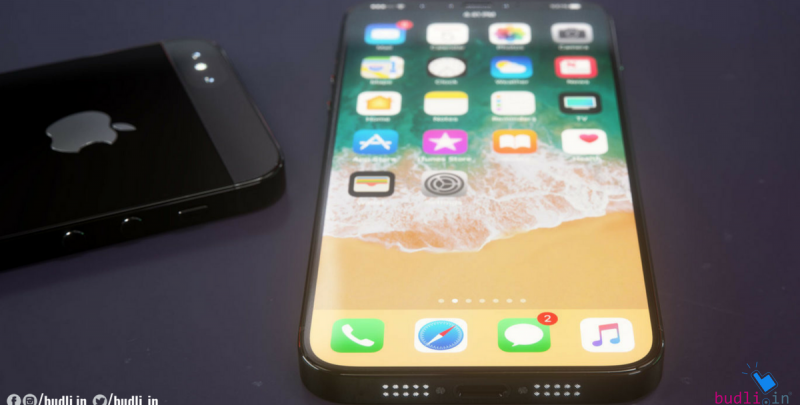If you’re thinking about getting a refurbished iPhone, you’ve come to the right place. A refurbished iPhone is basically a pre-owned device that’s been fixed up and restored to work like new. It’s a great way to get your hands on an iPhone without breaking the bank.
But here’s the thing: before you click that “buy” button, it’s super important to make sure your refurbished iPhone is the real deal. After all, you want to make sure you’re getting a quality device that’ll serve you well, right? So, let’s dive into eight easy ways to verify your refurbished iPhone and make sure you’re getting exactly what you paid for!
1. Check the Serial Number
First things first, let’s talk about the serial number. This little string of characters is like your iPhone’s unique ID card.
How to find the serial number
You can find the serial number in a few places:
- In the Settings app under General > About
- On the original packaging (if you have it)
- Etched on the SIM tray (you might need a magnifying glass for this one!)
Validate through Apple’s official website
Once you’ve got the serial number, head over to Apple’s official website and pop it into their coverage checker. This will tell you if the phone is legit and give you info about its warranty status.
2. Inspect the Cosmetics
Now, let’s play detective and give your refurbished iPhone a once-over.
Examine the body for scratches and dents
Take a good look at the phone’s body. A few minor scratches are normal for a refurbished device, but if it looks like it’s been through a war zone, that might be a red flag.
Check for screen damage
The screen should be in great condition. Look for any cracks, dead pixels, or discoloration. A good refurbished iPhone should have a screen that looks almost new.
3. Battery Health Check
The battery is the heart of your iPhone, so let’s make sure it’s beating strong!
How to check battery health in settings
Go to Settings > Battery > Battery Health. This will give you a percentage that shows how your battery is doing compared to when it was brand new.
What is a good battery health percentage?
Ideally, you want to see a battery health of 80% or higher. Anything lower might mean you’ll be reaching for that charger more often than you’d like.
4. Test Hardware Functionality
Time to put your iPhone through its paces and make sure everything’s working as it should.
Testing buttons, cameras, and sensors
- Press all the buttons to make sure they click properly
- Test both front and rear cameras by taking some photos
- Try out Face ID or Touch ID to ensure they’re working smoothly
Sound quality and microphone tests
Make a test call or record a voice memo to check the speaker and microphone quality. You don’t want to end up sounding like you’re underwater during phone calls!
5. Verify Storage Capacity
Let’s make sure you’re getting all the gigabytes you paid for.
Steps to check the actual storage against advertised
Go to Settings > General > iPhone Storage. The available storage should match what was advertised (keeping in mind that the operating system takes up some space).
Importance of correct storage for performance
Having the right amount of storage isn’t just about having space for your photos – it can affect your iPhone’s performance too. A phone that’s too full can start to slow down, so make sure you’re getting what you need.
6. Assess the Operating System
Software is just as important as hardware, so let’s make sure your iPhone’s brain is in good shape.
Ensure the OS is up to date
Check if the iPhone is running the latest version of iOS. Go to Settings > General > Software Update to see if any updates are available.
How to check for unauthorized modifications
Look out for any unfamiliar apps or settings. If the phone has been jailbroken, this could void the warranty and cause issues down the line.
7. SIM Card Functionality
Your iPhone needs to, well, be a phone. So let’s make sure it can actually make calls!
Testing call capability and connectivity
Pop in a SIM card and try making a call. Also, check if you can connect to Wi-Fi and cellular data.
Ensuring the phone is not carrier locked
If you bought an unlocked phone, make sure it actually works with different carriers. Try SIM cards from different providers if you can.
8. Purchase from Reputable Sellers
Last but definitely not least, let’s talk about where you’re buying your refurbished iPhone from.
Importance of buying from accredited sources
Stick to well-known, reputable sellers. This could be Apple’s own refurbished store, major electronics retailers, or trusted online marketplaces.
Red flags in seller reviews
Take a look at seller reviews and ratings. If you see a lot of complaints about phones not working as described or poor customer service, that’s a big warning sign.
Conclusion
And there you have it, folks! These eight simple steps can help you make sure your refurbished iPhone is the real deal. Remember, a little bit of caution goes a long way in making sure you get a great phone that’ll keep you happy for years to come.
Taking the time to verify your refurbished iPhone isn’t just about being careful – it’s about making sure you get the best value for your money. After all, a good refurbished iPhone can be just as awesome as a brand new one, at a fraction of the cost!
Ready to put your newfound knowledge to use? If you’re looking to sell used iPhone or buy refurbished iPhone, why not check out Budli? We’ve got a great selection of verified refurbished iPhones that might be just what you’re looking for. Happy iPhone hunting!


Comments are closed